How to grow leeks in Siberia?
Growing leeks in the garden every year becomes more popular with summer residents. They appreciated this crop for its high content of nutrients, resistance to frost, pests, excellent yield and easy maintenance. The biennial plant belongs to the Onion family, but does not have a pronounced bulb. Its leaves grow from the center of a small bundle of scales.
Grown in the country, it is of great benefit. The leaves and stems filled with vitamins are salted, frozen, pickled and used fresh to prepare delicious dishes. Green shoots of leeks easily adapt to different climatic conditions, so they are successfully grown in many parts of the country. Residents of Siberia and other regions appreciated this vegetable, as it is an important supplier of essential vitamins to the body.
Variety selection
If you want to grow a good harvest of leeks in a cold region, pay close attention to the choice of seeds to plant. There are early, mid-season and late varieties, and not all of them are suitable for the Siberian climate.
The best varieties, according to experienced summer residents:
- Asgeos;
- Karantansky;
- Pandora;
- Winner;
- Vesta.
In order for the leek to have time to fully ripen, it is advisable to plant early and medium varieties in Siberia, which do not have such a long growing season.
How to prepare seeds
In the south of the country, seeds are planted directly in the open ground in early spring. In the harsh climate of Siberia and the Urals, leeks are grown using seedlings, since tender seedlings will not survive possible frosts. Before sowing seeds, they must be properly prepared.
- To do this, fill them with water at room temperature for a day.
- Then drain the water, wrap the planting material in a damp natural cloth and wait until tiny white sprouts hatch.
Important!
For fast germination of seeds and a good harvest of onions, high-quality planting material is needed. Store seeds for planting in a dry area with excellent ventilation. Avoid temperature differences.
We plant seedlings
Leek seeds are planted in early March.
- Prepare special boxes with holes in the bottom. Fill them with moist, nutritious soil, make small grooves 1.5 cm deep, and place the seeds 1 cm apart.
- Row spacing should be 5 cm. Sprinkle soil over the seeds and cover the boxes with plastic.
- Place the future seedlings in a warm, well-lit place, periodically opening the film for airing and watering.
- When timid sprouts hatch above the ground, remove the plastic and move the boxes to a cooler place. The optimum temperature is 15 ° C to 20 ° C.
After a month, the seedlings will have real formed leaves. Then it needs to be thinned out so that there is a distance of 5 cm between the plants. Carefully removed seedlings can be planted in separate pots.
Continue growing and caring for leeks in the crates at the correct temperature. During the day, the temperature should be about 20 ° C, and at night it should drop to 10-12 ° C. It is advisable to prune the leaves of the seedlings every 2 weeks. It is necessary that they grow no more than 10 cm from the ground. This stimulates the development of the root system. At the end of May, the vigorous seedling has a trunk 1 cm in diameter and well-developed leaves. Now it can be planted in open ground.
Planting in soil
Growing leeks will be more successful in loamy soil. It is better that before this, potatoes, legumes, cucumbers or cabbage grow in the selected area.The garden must be prepared in the fall. It must be carefully dug up and fertilized with compost at the rate of 6 kg per square meter.
- Loosen the soil again in the spring. Make grooves in it 15 cm deep, sprinkle them with wood ash and moisten.
- Carefully remove the leek seedlings from the boxes, cut the roots 1/3 of the length and shorten the leaves in the same way.
- Mix equal proportions of clay and cow dung and dip the roots of the plants into the mixture before planting. This will help the onion take root faster.
- Place the planting material in the grooves, observing the distance between the seedlings 10 cm, and cover with earth.
If the weather is still cool enough, it is advisable to cover the leek with foil at night and open it in the morning. The row spacing should be about 35 cm. Some summer residents make them larger and plant carrots or beets there. Co-cultivation with leeks is suitable for these plants.
How to care for a plant
Leeks will need careful grooming to grow strong and juicy. He loves moisture, so be sure to water him regularly. Do this as soon as the soil begins to dry, from the moment the seedlings are transplanted into the open ground and throughout the entire growth period of the plant. At the same time, avoid puddles in the garden and stagnant water. This can lead to root rot.
It is required to loosen the area every 2 weeks. Leek care will not be complete without this. In "fluffy", loose soil moisture and oxygen penetrate better, which are necessary for the normal development of vegetable crops.
Growing leeks requires hilling. This is one of the most important points. As soon as the onion begins to actively stretch upward, while loosening, gently scoop up the soil from the rows and sprinkle it on the trunk of each bulb. Perform the procedure systematically twice a month. It will help form the long white stem for which leeks are grown.
Clean the weeds from the garden in a timely manner. If they hatch in the immediate vicinity of the trunk, it is better to carefully remove them with your hands so as not to cut the root system and the onion itself with a hoe.
Do I need to feed?
Some summer residents refuse this. But in order for the onion crop to be large, be sure to include fertilizing the garden in the care.
For the first time, do this 2 weeks after planting the leek seedlings outdoors. You will need organic. An ideal solution is mullein or bird droppings. Mullein is diluted with water in a ratio of 1: 8, and bird droppings - 1:20.
Do not forget to water the garden with leeks the day before feeding. The next morning, apply a small amount of liquid fertilizer under each plant at the rate of 10 liters of top dressing for 40 bushes. Then sprinkle the moist soil with dry soil.
After half a month and in mid-July, it is useful to apply mineral fertilizers. Fill a ten-liter bucket of water and dilute there:
- 20 g of urea;
- 15 g of potassium sulfate;
- 30 g superphosphate.
The resulting solution is enough to feed 40 onions.
Instead of mineral fertilizer, you can continue to use organic matter in the same proportion.
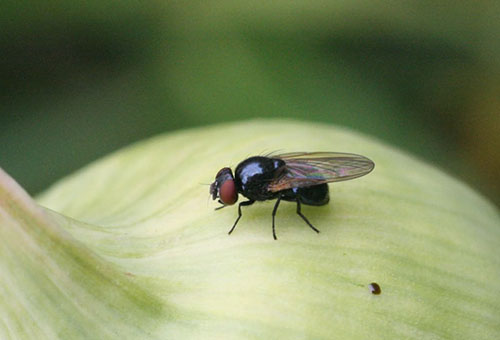
Pests
When properly cared for, leeks grown from seedlings are rarely sore and infested with pests. Most often he is attacked onion fly... To avoid insect infestation, it is recommended to plant carrots in the aisles and sprinkle tobacco on the soil in the garden. This scares the onion fly away.
Sometimes aphids settle on plants, which carry a dangerous viral disease - mosaic. There are no effective methods to combat it. It will be necessary to remove infected plants from the site and burn. To prevent infection, you need to fight aphids in all available ways: garlic and tobacco infusions, tar soap or insecticides.
Harvesting onions
In the northern regions of the country, leeks are harvested in September or early October. Adult plants are very frost-hardy and can easily tolerate temperatures as low as -5 and even up to -7 ° C.
Carefully scoop the onions out of the ground, being careful not to trap the soil between the fleshy leaves. Shake off and remove the white onion roots. Do not cut the leaves, otherwise the juicy trunk will begin to dry faster.
You can store vegetables in different ways.
- Some housewives drop it in the river sand or store it in plastic bags in the refrigerator.
- Others are cut into small pieces, frozen in small containers, or dried. Such preparations are added to any dishes, and they give them a piquant and mouth-watering taste.
A row of bulbs can be left to winter in the garden bed. To do this, they need to be properly insulated with a thick layer of sawdust and branches. Otherwise, with frosts above -15 ° C, the onion may die. In the spring, free the leek from its hiding place and dig it up for consumption. It is advisable to extend the cultivation of several bulbs until autumn in order to get a portion of good seeds from them for seedlings.
Leeks are a healthy vegetable that does not require specific care. Growing seedlings from seeds allows you to get an excellent product filled with nutrients in 6-7 months. Under favorable conditions, it is well stored and does not lose its useful and taste qualities until spring.
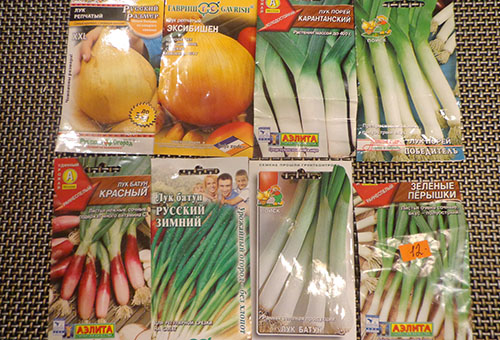
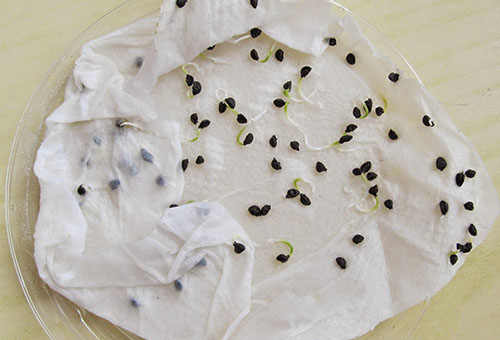
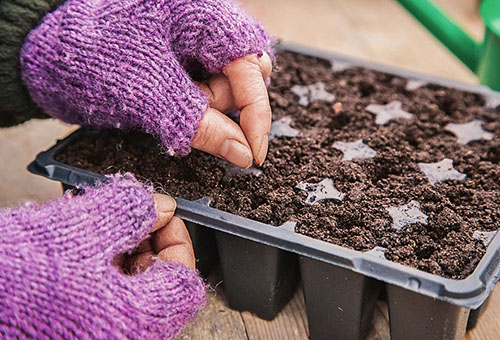

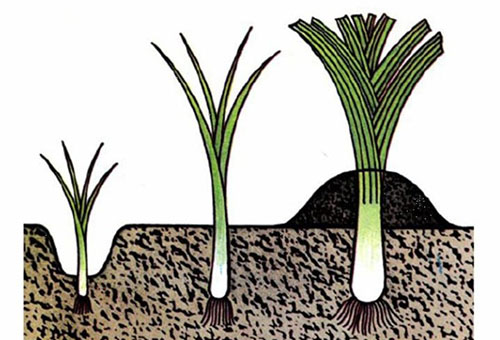

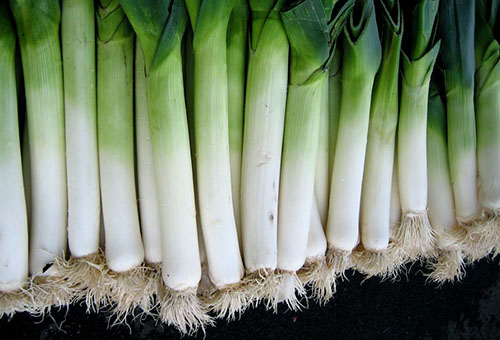
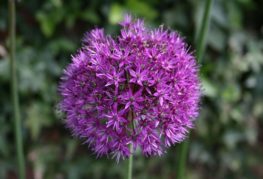
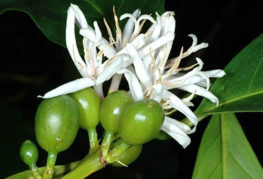
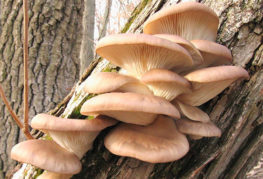

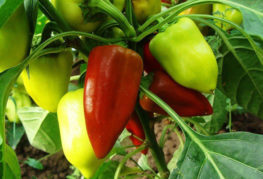

and will be published shortly.